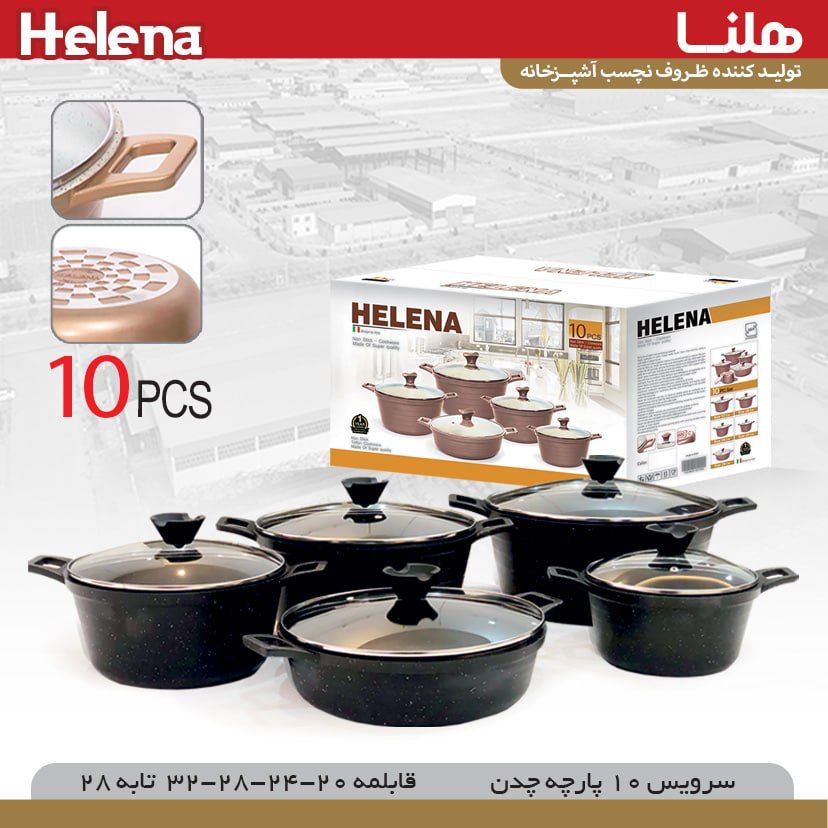Teflon, ceramic, aluminum plating… if you are going to buy a new non-stick pan, you are probably confused between these various titles. The variety of cooking utensils has increased so much that it is difficult to understand what kind of food each one eats for cooking and which of the rest is safe. In the following, we will discuss all the nuances of non-stick dishes and get acquainted with their types and characteristics.
The body of non-stick dishes may be made of different materials such as aluminum, stainless steel or ceramic, but what makes them non-stick is the coating that is added on these dishes. This is also the reason why non-stick dishes are not as durable as traditional dishes because this coating can be scratched or removed. This coating in the form of paint is sprayed on the dishes in one to five layers.
This is also the reason why non-stick dishes deteriorate over time because their coating is destroyed.
Types of non-stick dishes:
Teflon dishes
In the past, most non-stick dishes have been coated with polytetrafluoroethylene (PTFE), also known as Teflon. Although Teflon dishes are completely non-stick, they also have disadvantages.
Containers coated with PTFE emit toxic gases at temperatures above 260 degrees Celsius, which can easily happen, especially if you heat the container empty or with only a small amount of food inside. . Non-stick dishes should always be heated with oil and not empty, because oil starts to smoke at a temperature below 260 degrees Celsius. According to research, if Teflon cookware gets too hot, it can cause “Teflon flu” or poisoning in a person, which has symptoms such as fever, chills, sore throat and weakness.
Research has also found a link between perfluorooctanoic acid (PFOA), one of the ingredients used in the manufacture of Teflon, and several problems including thyroid disorders, chronic kidney disease, liver disease, testicular cancer, infertility and low birth weight. Birth tells a story.
ceramic dishes
Ceramic non-stick cookware has become very popular in recent years.
Ceramic coating is considered less dangerous than Teflon coating because it does not contain any toxic chemicals like PFOA and it does not emit toxic gases even at high temperatures. However, ceramic cookware is not as durable as Teflon cookware and is more vulnerable compared to them.
Aluminum plating containers
Aluminum plating containers have also become more common, although aluminum plating is not technically a non-stick coating. In the electroplating process, a layer of aluminum oxide is added to the container in a stronger and darker form than that found in aluminum containers. By doing this, the surface of the dish becomes a little stronger and non-reactive (uncoated aluminum can react with acidic foods and give a metallic taste to the food) and it looks good, but it does not stick and is suitable for cooking any type of food. not suitable.
Although cooking with aluminum dishes is associated with risks, aluminum plated dishes are generally considered safe because they are all coated and this coating does not react with acid that ordinary aluminum does. Of course, stainless steel containers are better than aluminum plating containers, because the aluminum plating coating is destroyed over time and with each use, but the containers whose coating is made of stainless steel are much more durable.





No Views